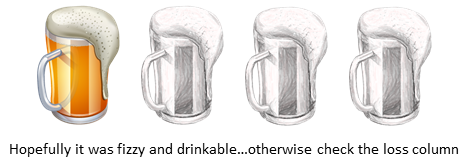Have you ever had gout? No. Trust me, you never want to have even the slightest hint of having gout.
Why? It’s brutal. My father suffered from gout for the last couple of years of his life and it would immobilize him for days at a time. Other people describe even the slightest sensation of touch near their feet as being unbelievably painful.
When I got the first hints of gout in my big toes I got worried. So worried that I started to figure out what I needed to do in order to avoid having full blown attacks. Guess what? Of all the risk factors related to lifestyle I was only guilty of one—alcohol consumption via beer.
Furthermore, I have a long history of rheumatoid arthritis (RA) in my family on both my parents’ sides. This makes me especially sensitive to any issue relating to joint health because I know that before too long I will be combating the symptoms of RA. There is no need to hasten that arrival by inviting inflammation of any kind into my body.
The third health consideration is that I am overweight. Not extreme weight loss overweight, but probably carrying a little more than 20 pounds of fat that is extra pressure on my already taxed joints. No matter how much I watch what I eat and exercise I was probably sabotaging my efforts by finishing the night off with a few pints of homebrew from keezer. At about 13 calories per ounce an imperial pint was packing an extra 250 or so calories into every glass I finished. Ugh.
This got me to really assess my lifestyle vis a vis my beer drinking. I love beer. I enjoy the culture of beer. I find satisfaction in trying new beers and seeking out new breweries. I revel in talking about all aspects of beer with like minded folks. However, I like to be able to walk without pain and if the small amount of time I spent with a gout-like episode was any indication I would give up drinking in a heartbeat.
People reorder their lives for all sorts of reasons and I imagine that health is paramount among those reasons. My decision was to make changes before my health degraded to the point where I was dependent upon medication or staring down the barrel of surgery.
Will I still drink a beer now and again? Sure, but it will form a much less significant portion of my life than it has for the past several years. On the bright side, I should be awake early on Sunday mornings to go for bike rides and hikes with my daughter as opposed to shuffling around the house with a hangover.
Anyone know of someone who wants to give a keezer a good home?















